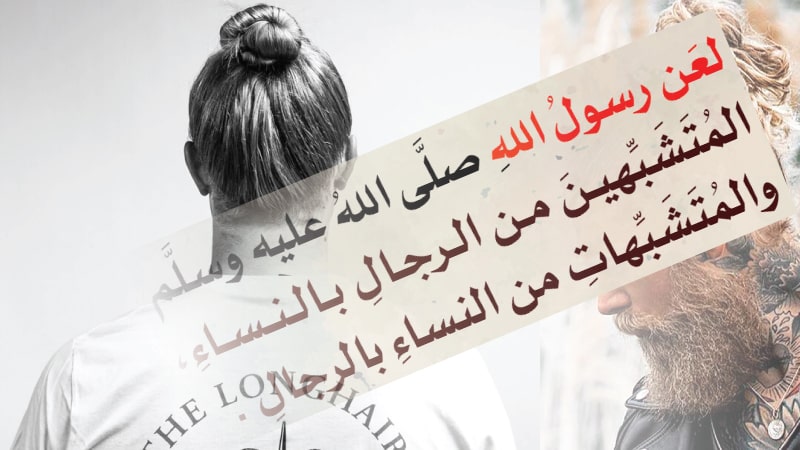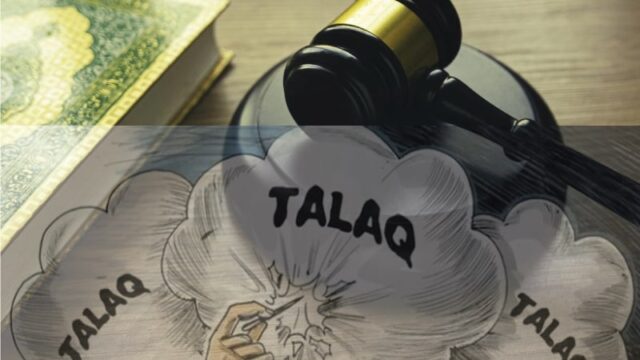Question
In days of extreme heat, can men tie their hair in a ponytail to obtain tranquillity? If not then is it permissible when the person is at home only? Please provide guidance.
Answer
All praises belong to Allah alone, may Salah and Salam be upon the one after whom there is no Prophet!
In the Islamic law, it is forbidden for men to resemble women and for women to resemble men, rather there is a severe threat about this. Abdullah ibn Abbas (may Allah be pleased with them both) said:
«لَعَنَ رَسُولُ اللَّهِ صَلَّى اللهُ عَلَيْهِ وَسَلَّمَ المُتَشَبِّهِينَ مِنَ الرِّجَالِ بِالنِّسَاءِ، وَالمُتَشَبِّهَاتِ مِنَ النِّسَاءِ بِالرِّجَالِ»
“Allah’s Messenger (ﷺ) cursed those men who are in the similitude (assume the manners) of women and those women who are in the similitude (assume the manners) of men” (Sahih Al-Bukhari: 5885)
The questioner asked about arranging one’s hair, so we should take some matters into account:
- Keeping long hair is not a religious topic rather a societal topic, meaning it is not that someone will obtain reward by keeping his hair long and if he does not keep it then he will not have reward. In other words it is a Sunnah Al-‘Aadah (of habit), not a Sunnah of Ibadah (Worship)
- Though if someone keeps his hair long, then the Prophet (ﷺ) instructed to honour his hair, and honouring means to comb them, put oil on them, beautify them, and keep them away from being dirty and messy. Abu Hurayrah (may Allah be pleased with him) said: “The Prophet (ﷺ) said:
«مَنْ كَانَ لَهُ شَعْرٌ فَلْيُكْرِمْهُ»
“He who has hair should honour it.” (Sunnan Abi Dawood: 4163)
The hair of the Prophet (ﷺ) used to reach his earlobe and if they were longer, they would reach his shoulders. The evidence for this is the Hadith narrated by ‘Aishah (may Allah be pleased with them both):
«كَانَ شَعْرُ رَسُولِ اللَّهِ صَلَّى اللهُ عَلَيْهِ وَسَلَّمَ فَوْقَ الْوَفْرَةِ، وَدُونَ الْجُمَّةِ»
“The hair of the Messenger of Allah (ﷺ) were above Wafrah (when the hair of the head reaches the earlobe) and below Jummah (when it reaches the shoulders).” (Sunnan Abi Dawood 4187)
Anas ibn Malik (may Allah be pleased with him) said:
«كَانَ شَعْرُ رَسُولِ اللَّهِ صَلَّى اللهُ عَلَيْهِ وَسَلَّمَ إِلَى أَنْصَافِ أُذُنَيْهِ»
“The hair of Messenger of Allah (ﷺ) were halfway down his ears.” (Sunnan Abi Dawood: 4186)
Umm Hani (may Allah be pleased with her) said:
«قَدِمَ النَّبِيُّ صَلَّى اللهُ عَلَيْهِ وَسَلَّمَ إِلَى مَكَّةَ وَلَهُ أَرْبَعُ غَدَائِرَ» تَعْنِي عَقَائِصَ
“The Prophet (ﷺ) came to Mecca and he had four plaits of hair.” (Sunnan Abi Dawood: 4191, declared authentic by Al-Albani)
When the hair of the Prophet (ﷺ) were long, he would use “Talbid” (sticking gum and others) to attach his hair and beautify them in this way, in the same manner as we use Mehndi (henna) to beautify our hair, so that they are not messy rather attached. When his hair was longer, they would take the form of plaits, meaning he would not make plaits for fondness but during travel it would become difficult to look after the hair or his hair would grow and take the form of plaits by themselves.
Hafiz ibn Hajar (may Allah have mercy on him) said: “This happened in the state of travelling when he had no time to look after his hair and beautify them” (Fath Al-Bari: 10/360)
Imam ibn Al-Qayim (may Allah have mercy on him) said:
وَكَانَ شَعَرُهُ فَوْقَ الْجُمَّةِ وَدُونَ الْوَفْرَةِ، وَكَانَتْ جُمَّتُهُ تَضْرِبُ شَحْمَةَ أُذُنَيْهِ، وَإِذَا طَالَ جَعَلَهُ غَدَائِرَ أَرْبَعًا، قَالَتْ أم هانئ…
“…and when his hair would be longer (up to the shoulders), he would make four plaits of hair, Umm Hani said…” (Zad Al-Ma’ad: 1/170)
- Regarding managing the hair, we find clear guidance from the Messenger of Allah (ﷺ) to beautify them. He would comb them time to time, put oil, stick them together and wear a turban. If someone’s hair become as long as the hair of the Prophet (ﷺ), he can comb them and wear a turban and others to manage them.
- As for the matter of tying them with in a ponytail, then this is extremely objectionable. In our society, debauchee, libertine and morally dissolute type of people tie their hair in ponytail to resemble women, and keeping the hair in control is merely a false pretext, such people sometimes wear earrings, bangle on their hand wrists and others. The youth should keep their shape according the Shari’ah and avoid resemblance with English, disbelievers and non Muslims. Allah knows best.
Noble Muftis
His excellence Shaykh Abu Muhammad AbdusSattar Hammad (President of the Lajnah)
His excellence Shaykh Abdul Haleem Bilal (may Allah preserve him)
His excellence Shaykh Javed Iqbal Sialkoti (may Allah preserve him)
His excellence Shaykh Sa’eed Mujtaba Sa’eedi (may Allah preserve him)
His excellence Dr Hafiz Ishaq (May Allah preserve him)
Note: This is a translation of the original text of the Fatwa which was issued in the Urdu language.

















